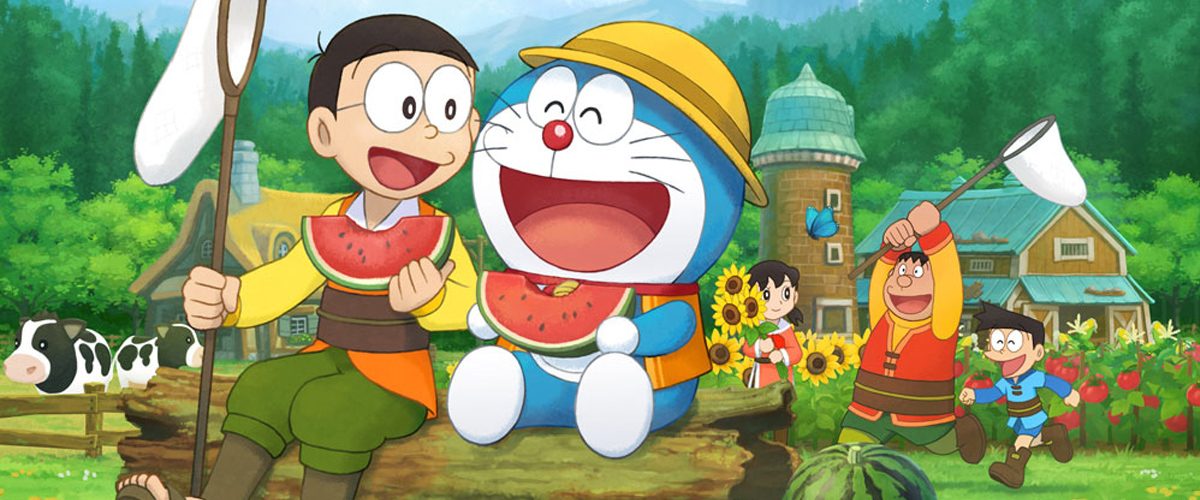Farming and Doraemon. While we may never know which gaming executive thought this up since this is a crossover no one expected, Bandai Namco has landed themselves a potential goldmine here.
Developed by one of the makers of Harvest Moon and Rune Factory, Marvelous, the pedigree of combining a much-loved IP with a veteran studio is a dream tie-up. Add farming, and you have a winning element that someone pulled out of their pocket.
Transported to a different timeline/ reality, Noby, Doraemon, and gang must figure out a way to get back to their own time through the process of agricultural pursuits.
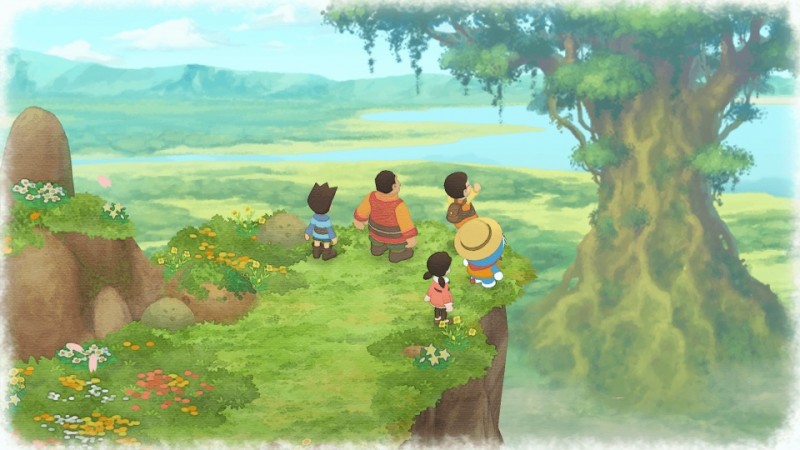
When it comes to the world of Doraemon: Story of Seasons, the visuals immediately grab you with its watercolour aesthetic. Like a masterpiece in a museum, the game’s visuals reveal different details when seen up close or zoomed far out. It’s a nice touch when it comes to such games breaking against the grain. The last time we’ve probably seen something in such good execution would have been Okami in 2006. It’s truly a masterpiece to actually explore all the areas in the game as from forests to beaches to the small farming town, the artists certainly have poured in their love for Doraemon and blended it nicely with the farming sim.
However, such visuals are only skin deep when the gameplay is thrown into the mix.
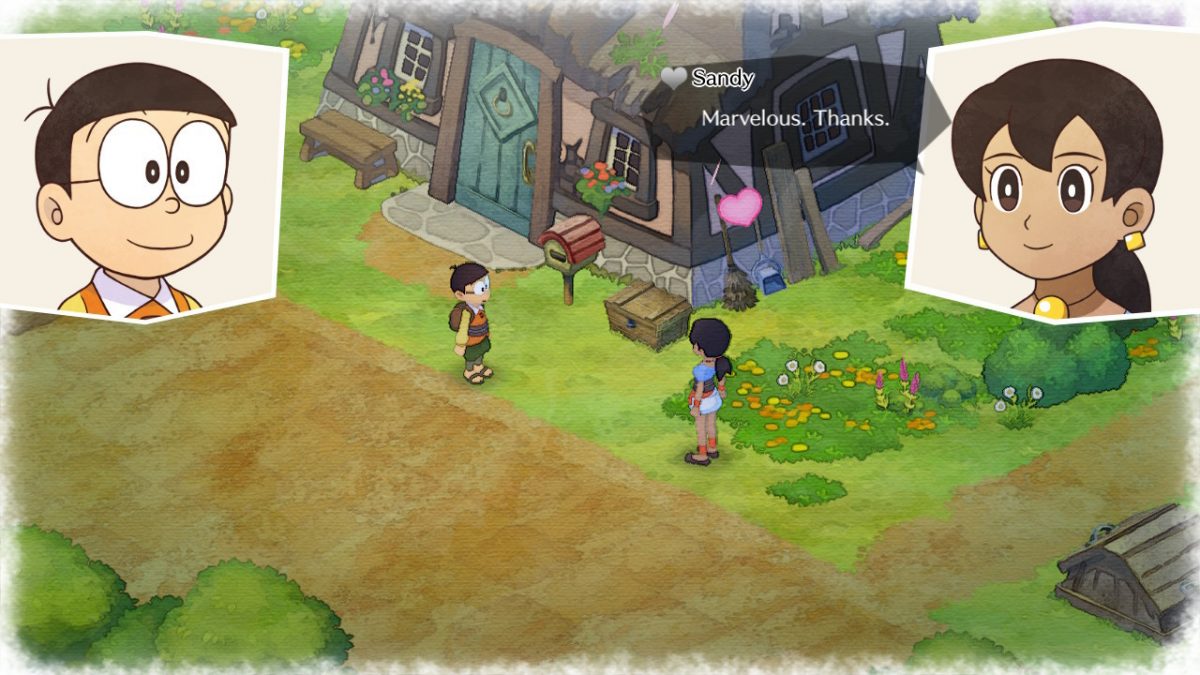
After the first extended intro scene, it soon becomes apparent that Doraemon: Story of Seasons is more visual novel than farming simulator. There’s quite a fair number of characters to talk to and each of them gives players different unlocks at different relationship levels. This means that you will need to actually start gifting early on to make your overall game in Doraemon: Story of Seasons much more bearable.
For veterans to the genre, everyone knows that early game forage material is essential in getting your farm up and running in double-quick time.
Combined with the fact that some events require multiple NPCs’ relationship levels to hit a certain stature before players can trigger specific cut scenes to progress the story.
Compounding this issue is the lack of clear direction on how to progress, and all these combined will get new players possibly frustrated at the game.
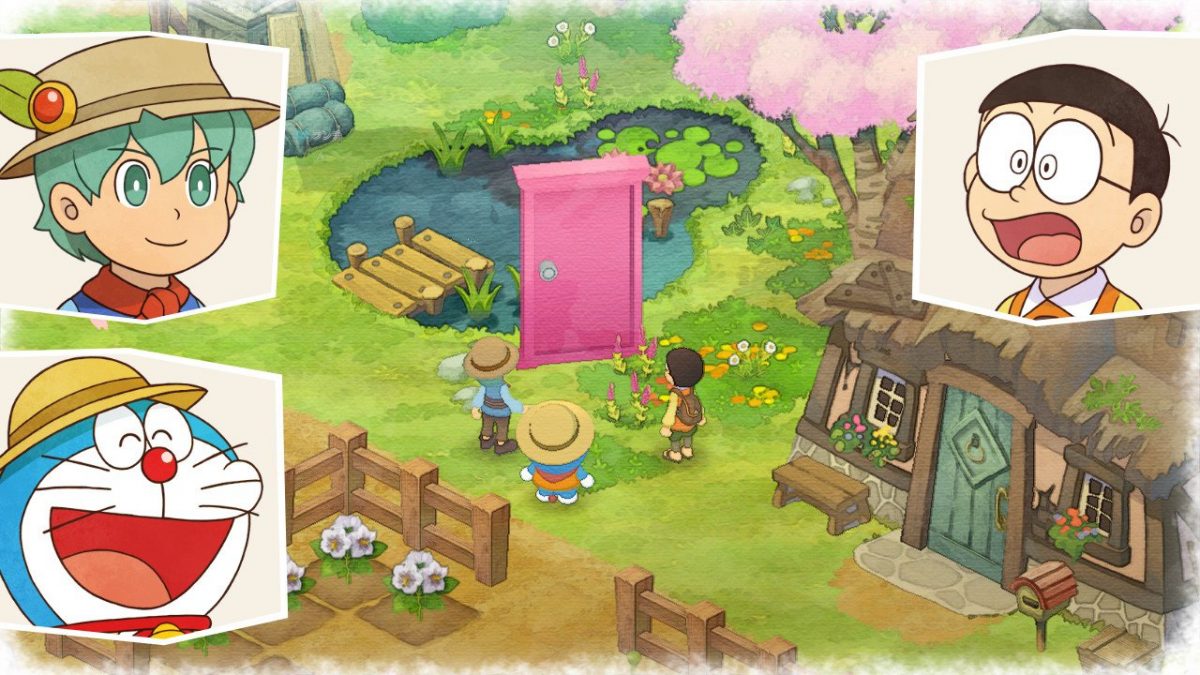
Such cutscenes are important because they help to further the main story. Plus it also unlocks special items that actually help you traverse around the map quickly, such as the Anywhere Door. This door can be unlocked really early if you have good relationships with Doraemon and the Mayor, and grabbing one early on will help cut down travel time by up to 90%.
Commuting or saving time is important as you will be spending time collecting materials for gifts to further your relationship with other NPCs.
This aspect is hardly the most fun one would derive from Doraemon: Story of Seasons. While it’s meaningful how gadgets featured in the anime make an appearance to help Noby’s attempts to go back to his own timeline, the process of unlocking them is less appealing.
In a nutshell, it seems that Doraemon: Story of Seasons still has ways off when it comes to dethroning the best farming sim at the moment – Stardew Valley.
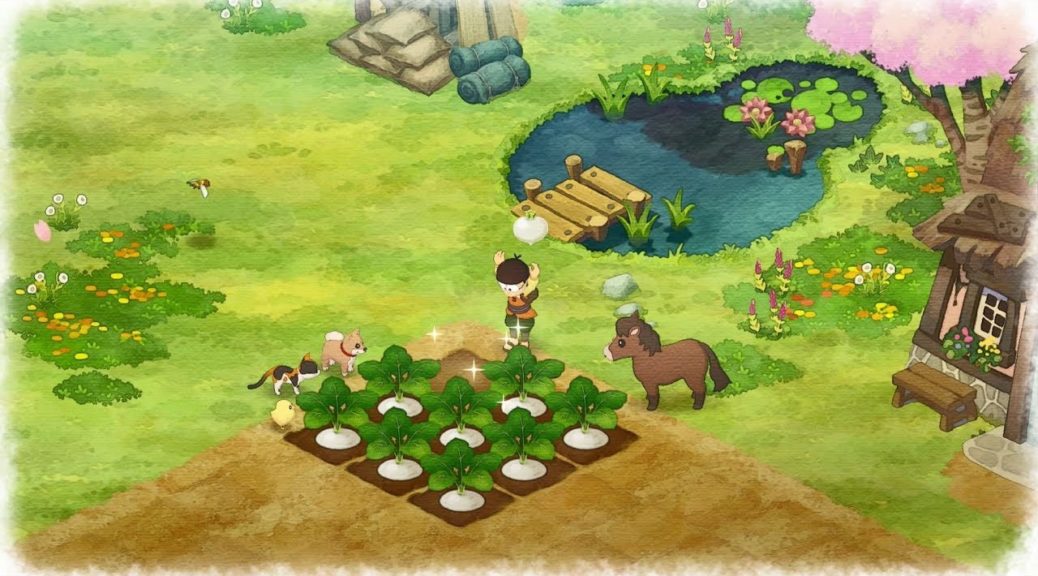
For a Harvest Moon game, farming actually takes a backseat in Doraemon: Story of Seasons. Compared to other farming simulators, the core activity actually makes you very little money. Thankfully, there are other alternatives which can net a significant amount of coin, but these activities are not fun when done at extended periods of time.
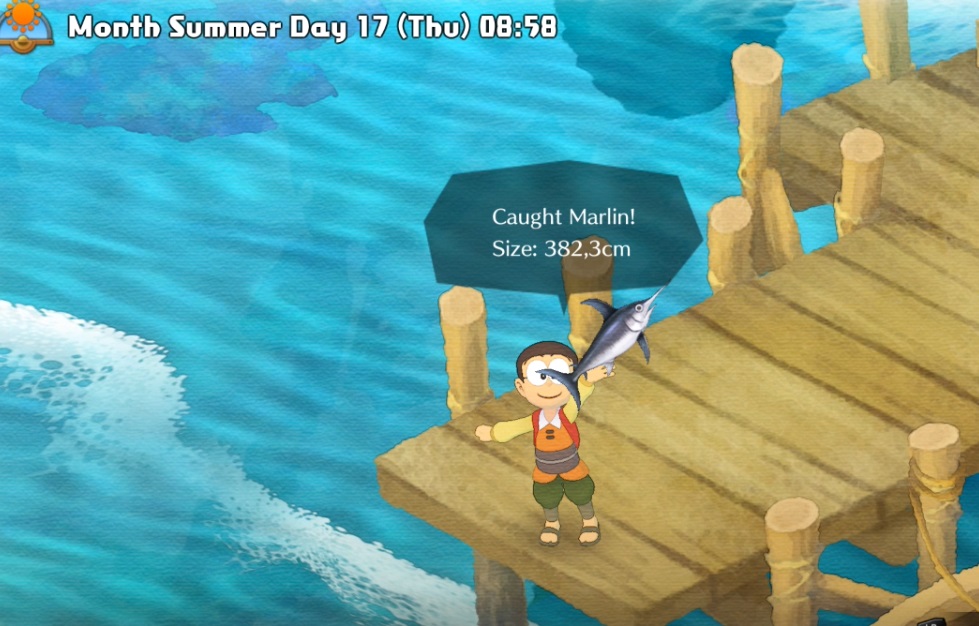
Early in the game, fishing earns you a good amount of money, but it’s actually pretty boring to actually wait around for a fish to actually snag onto your line. You’ll have to spend most of your day fishing if you actually want the min-max in the early portions of the game. Then run around town to give out items to specific NPCs to forward the story.
One of the biggest issues within Doraemon: Story of Seasons is the presence of hard caps. Having maxed out Noby’s energy reserve, which is the main resource to carry out activities, you can’t really do more.

Players will find themselves struggling to even complete all the tasks needed to in one day. Outside of fishing, activities like mining take up a lot of energy and you end up starting to save scum (saving and reloading the game repeatedly) to make it deeper into the mine. Players would have to do so because they will need to hit specific tiles in order to find a ladder in the mine to go deeper. This not helped in any way by the pickaxe which you actually can upgrade sequentially. Even in past Harvest Moons, over time upgraded tools actually get meaningfully better.
If five energy points are required to complete a task while using an entry-level tool, you will actually need the same five energy to complete the same task with an upgraded tool. The only difference here is that you actually use less in-game time to finish the task. When it would take ten seconds to chop down a tree, an upgraded tool can get is done in five seconds. The same amount of energy is used to complete the task.
This actually runs counter to having a huge farm with plenty of crops. Watering a farm daily will take a good chunk of energy. Thus, the logical step would actually to fish instead as it does not take any energy points. The real pain would be that crops actually don’t earn a lot of money as well given the effort needed to harvest them. Hence, if you’re really wanting to make bank early on, you’re left with fishing as the only viable alternative.
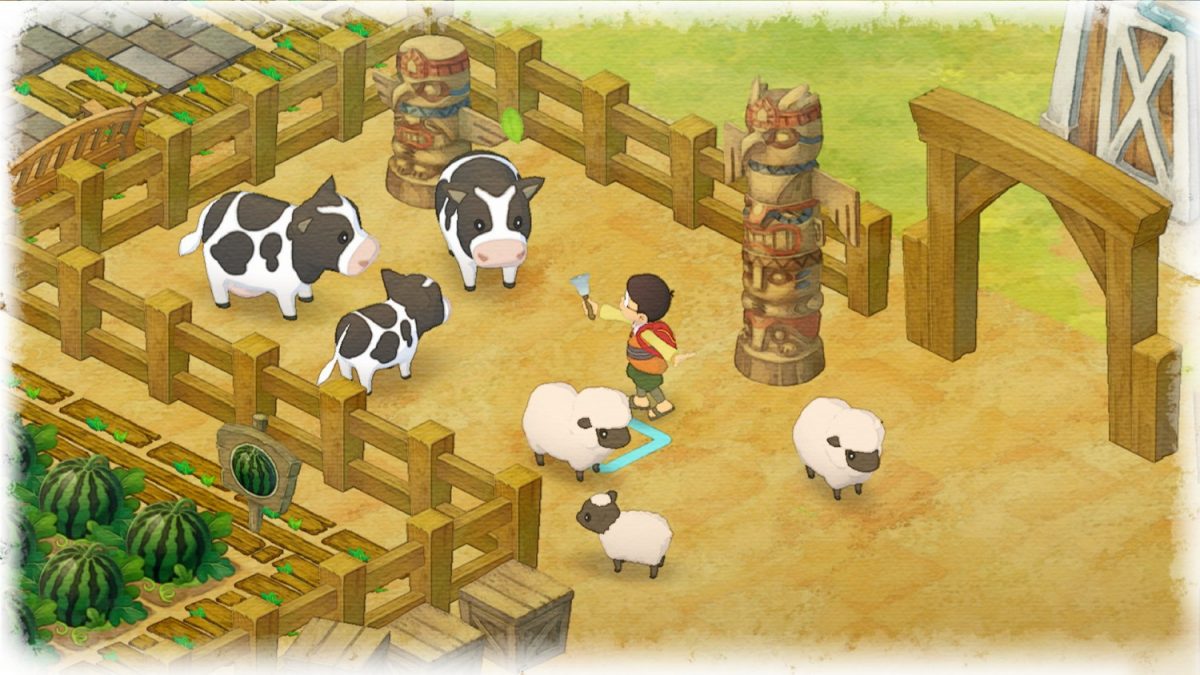
Late in the game, having spent all that time fishing, players will eventually find themselves conducting a game of arbitrage as their main source of income. This means buying materials from vendors and processing it back on the farm. With all the money earned, it becomes far easier to level up relationships and spending more time venturing down the mine.
To a new player to the Harvest Moon genre, this approach isn’t quite as welcoming as one might appreciate. It’s too grindy for its own good and it can become uninteresting for the average player.
This issue makes it a big waste especially when Doraemon is a great IP which could have been further leveraged on.
There’s just so much more the game could have done to make Noby’s farm even more aesthetically pleasing. But it’s just not worth the monetary and time effort to do so. Given that there’s a huge farming space to take advantage of, it only makes more sense to make farming a core aspect of the game overall.
The only upside to the pain points within Doraemon: Story of Seasons would the allowance given for players to take it all in at their own pace. There seems to be no penalty when taking it slow but it could have been improved much better if the game had done a better job in explaining the overall goals and how to get there.
If you’re a min-max player like myself, the constraints might be too restrictive the enjoy the game fully. For new players, it’s best to approach this game as a visual novel where cultivating relationships is a plus as opposed to farming ignoring the game’s core mechanic.
Getting past the initial money curve, the game does become significantly easier. It’s always a charm to see your farm expand into new, and better, revenue streams. Sadly it counts on the player getting over that hill in the first place. For new players entering because of the IP, Doraemon: Story of Seasons might be a bitter pill to swallow.
GEEK REVIEW SCORE
Summary
If you’re attracted by the Doraemon IP, this is a challenging entry into the farming simulator genre. For Stardew Valley fans, this game might not scratch that itch.
Overall
7/10-
Gameplay - 7/10
7/10
-
Story - 7/10
7/10
-
Presentation - 9/10
9/10
-
Value - 6/10
6/10
-
Geek Satisfaction - 6/10
6/10
User Review
( votes)Gerald currently straddles between his love of video games and board gaming. There’s nothing that interests him more than trying out the newest and fanciest gadget in town as well. He dreams of publishing a board game sometime in the future!

